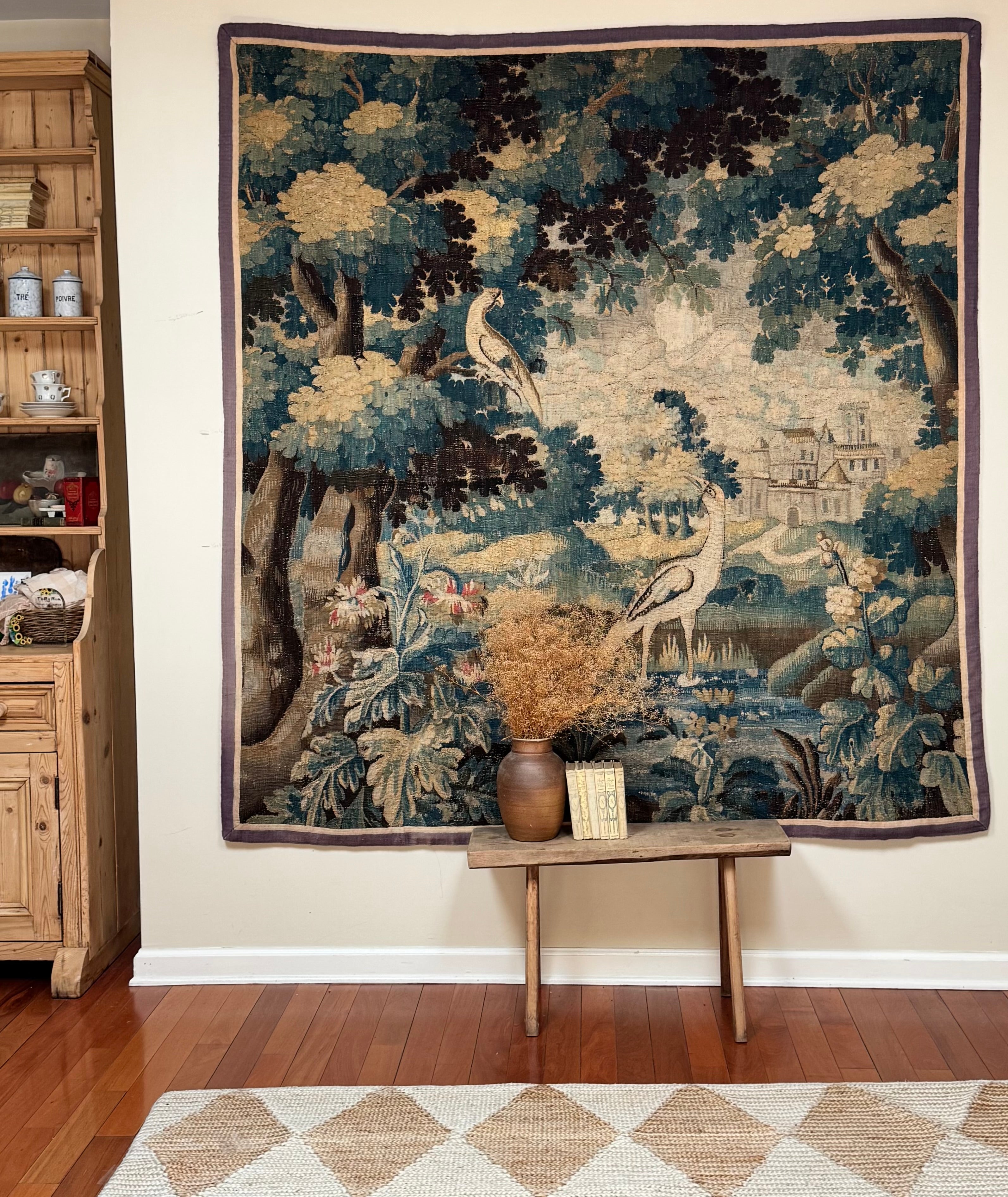
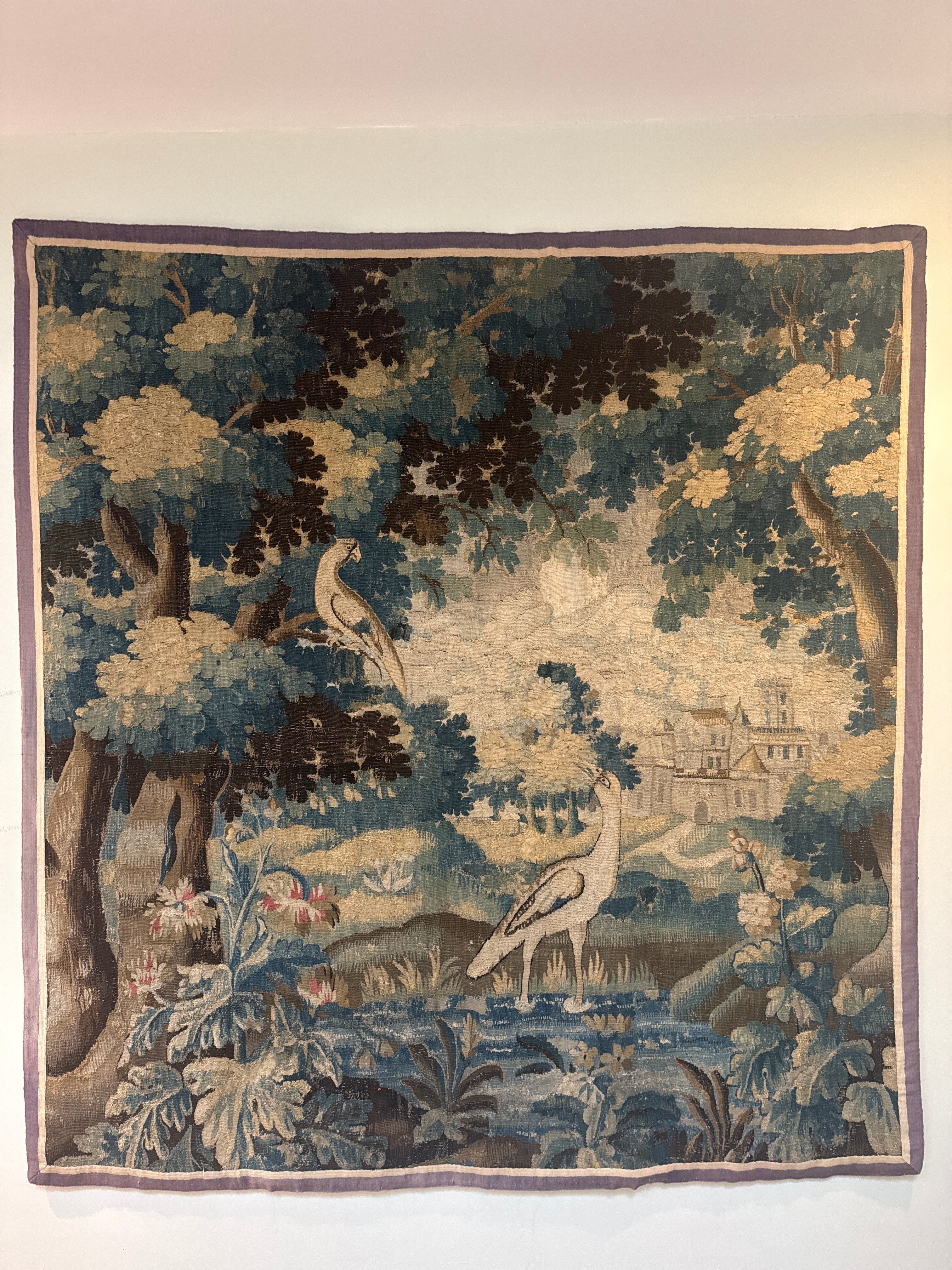
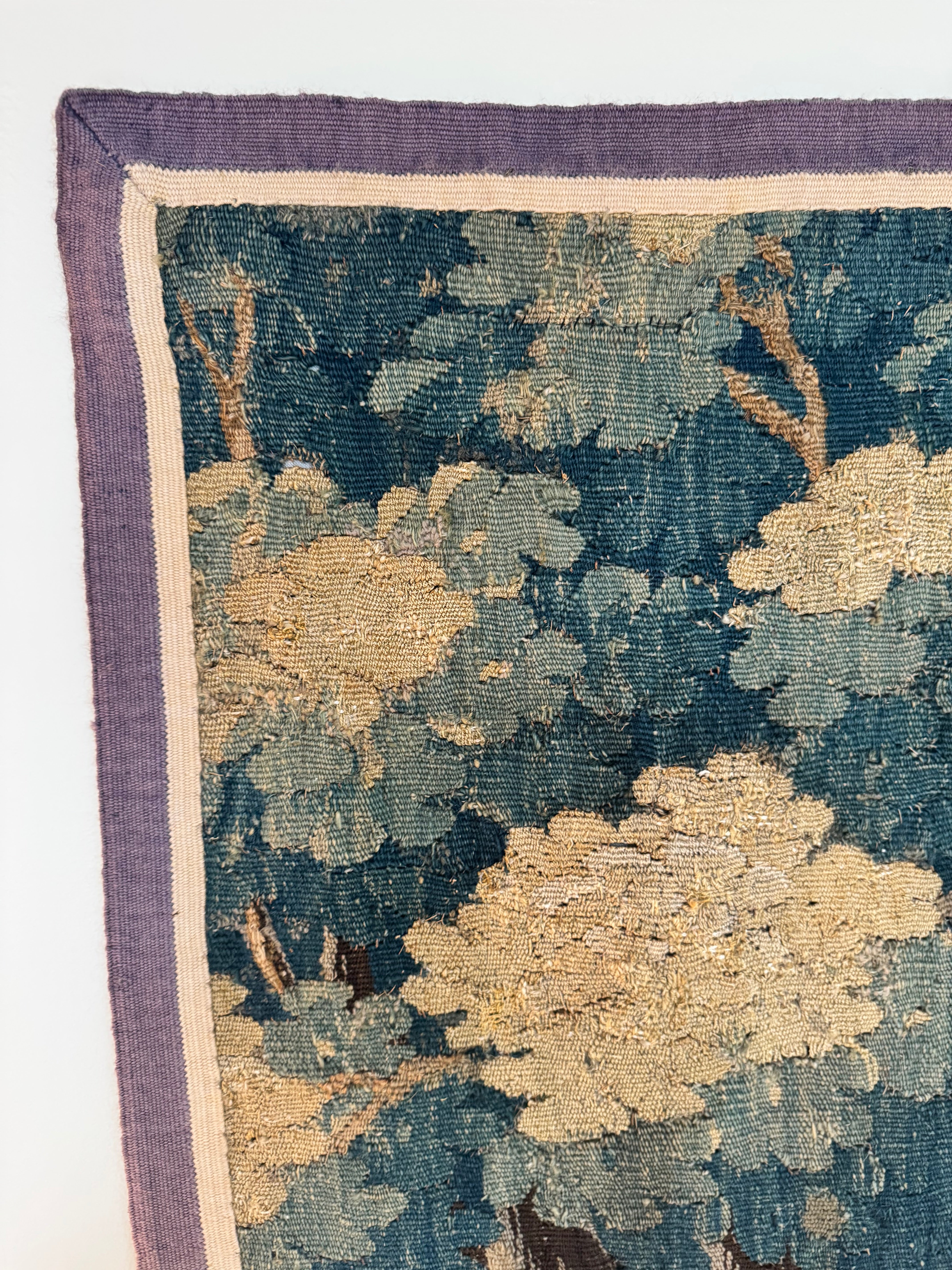
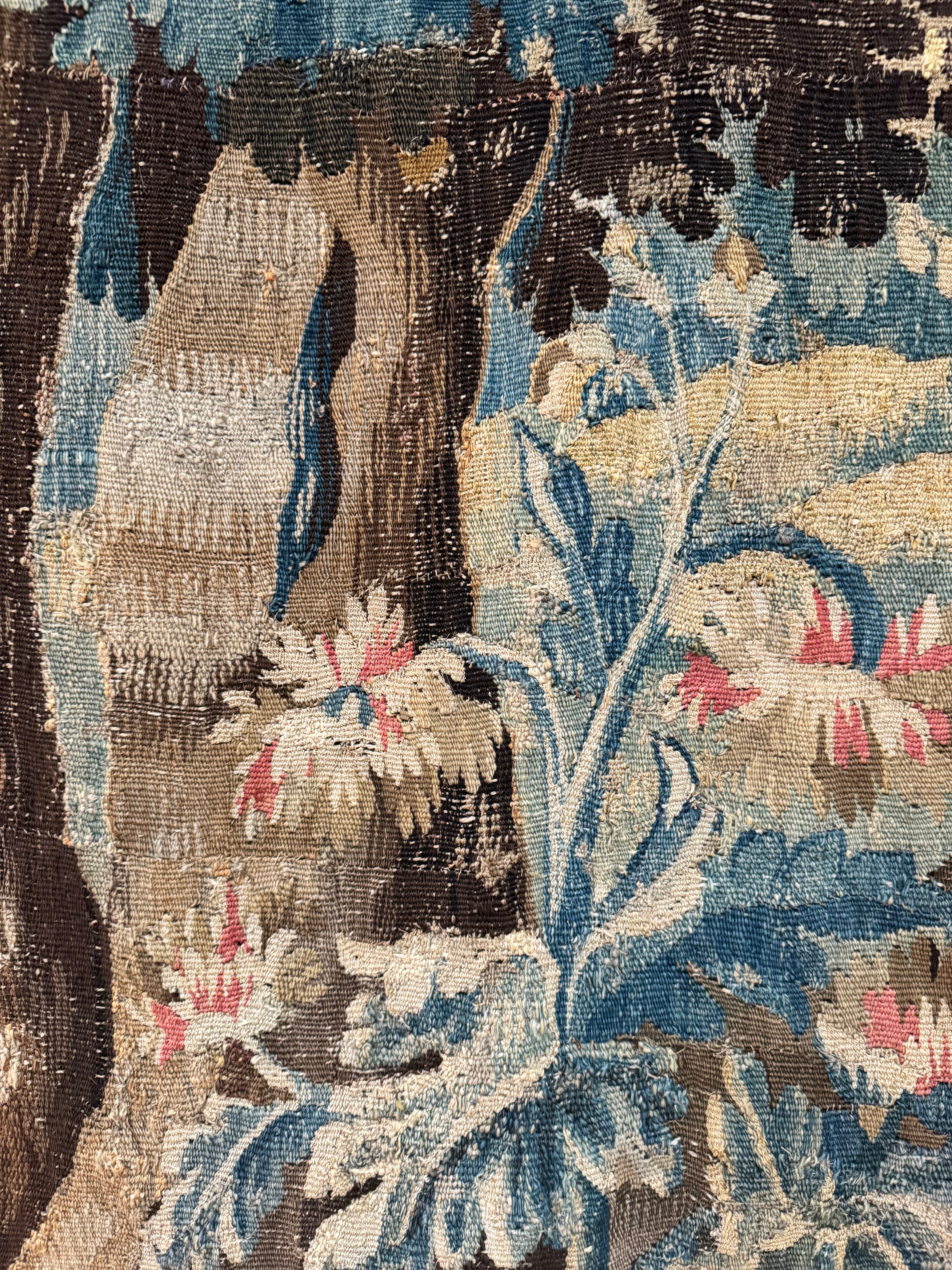
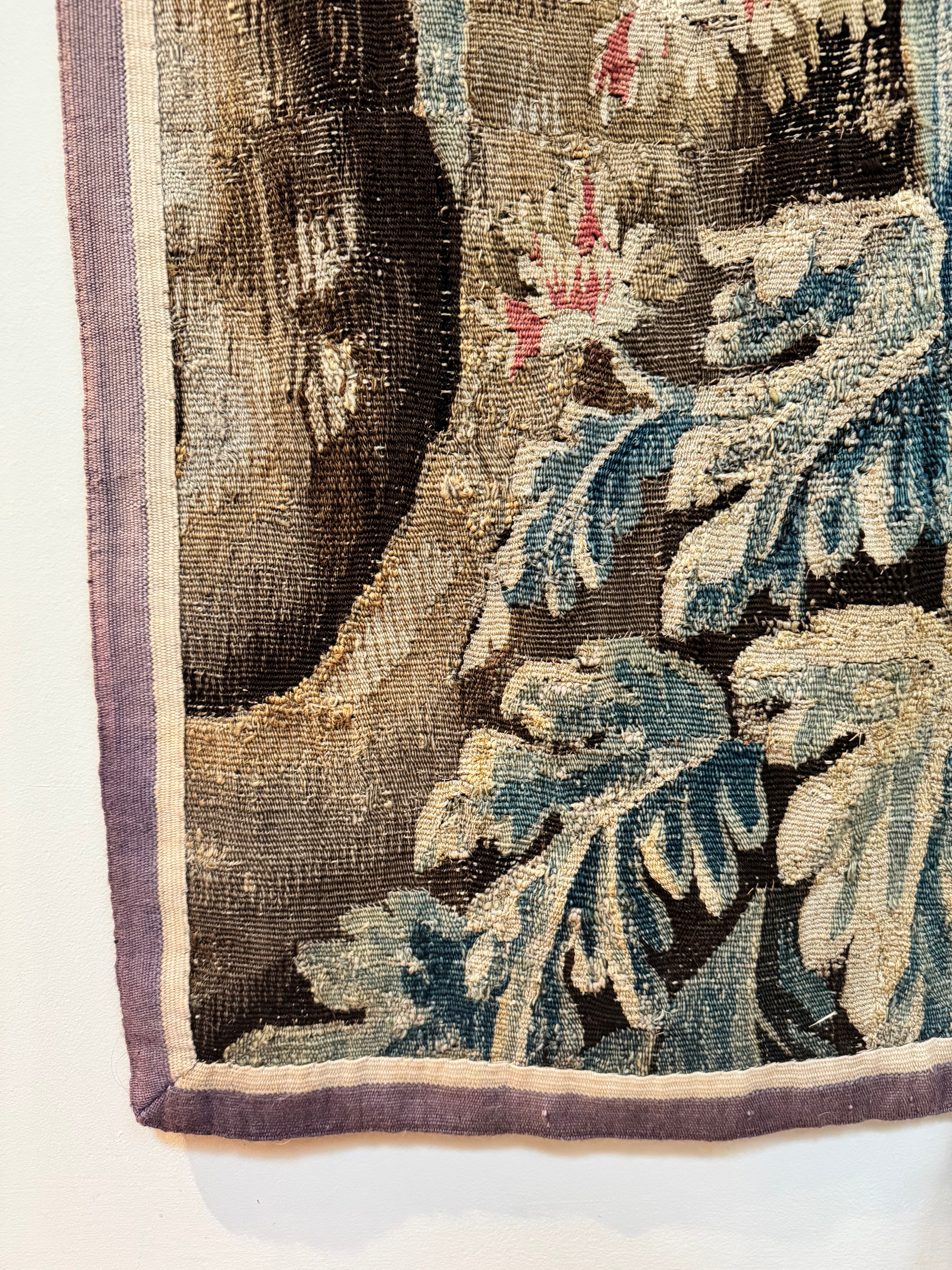
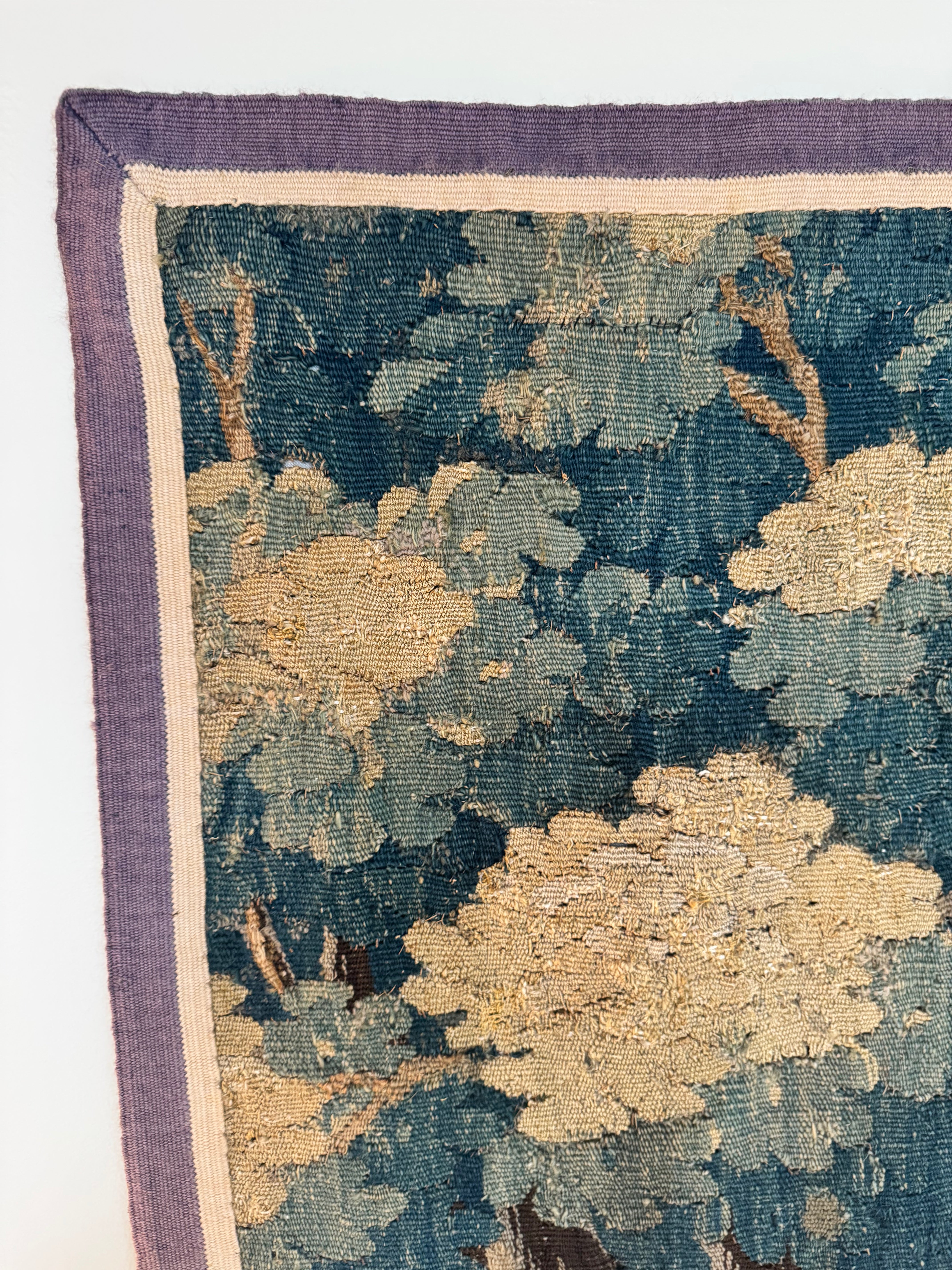
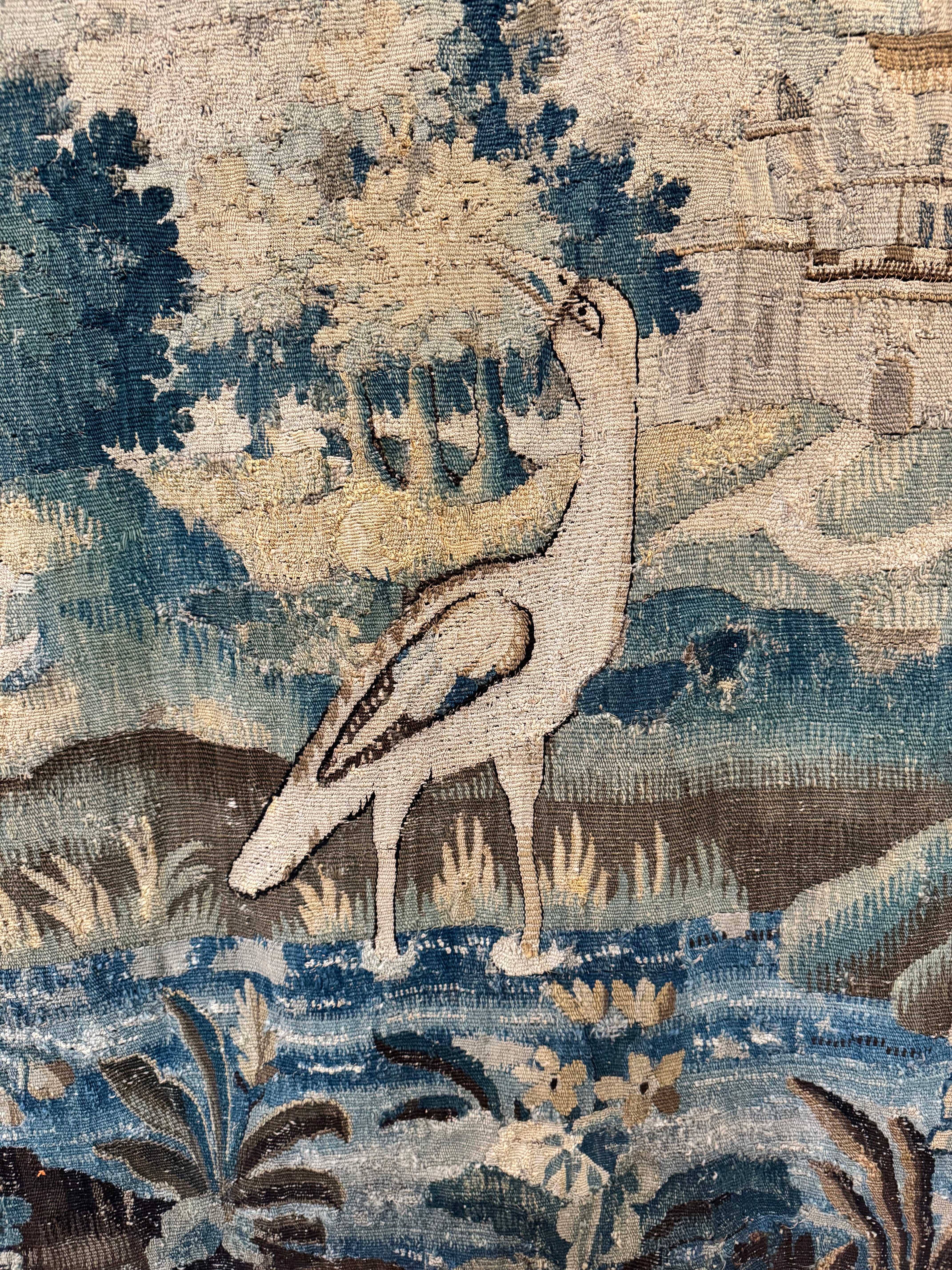
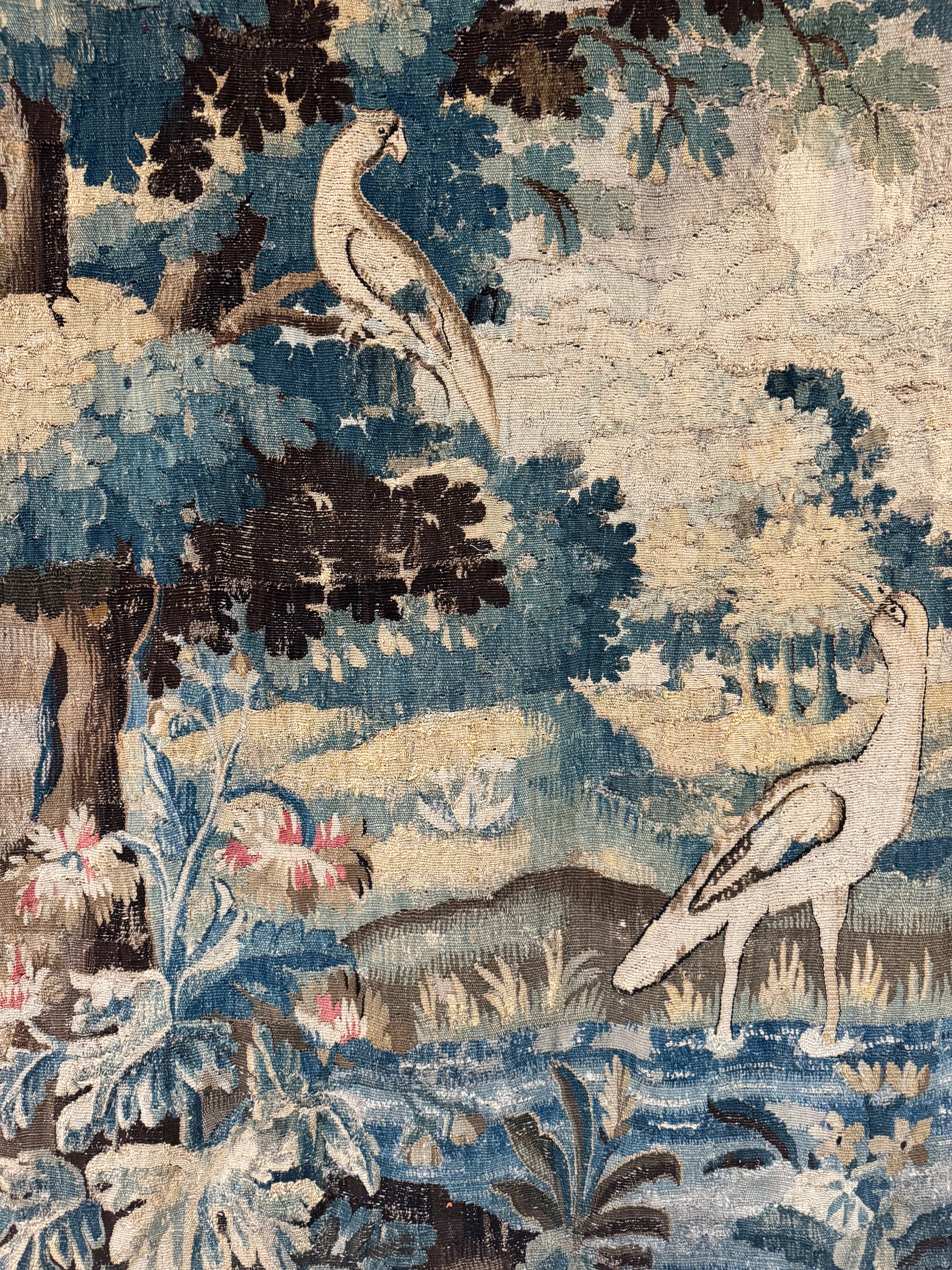
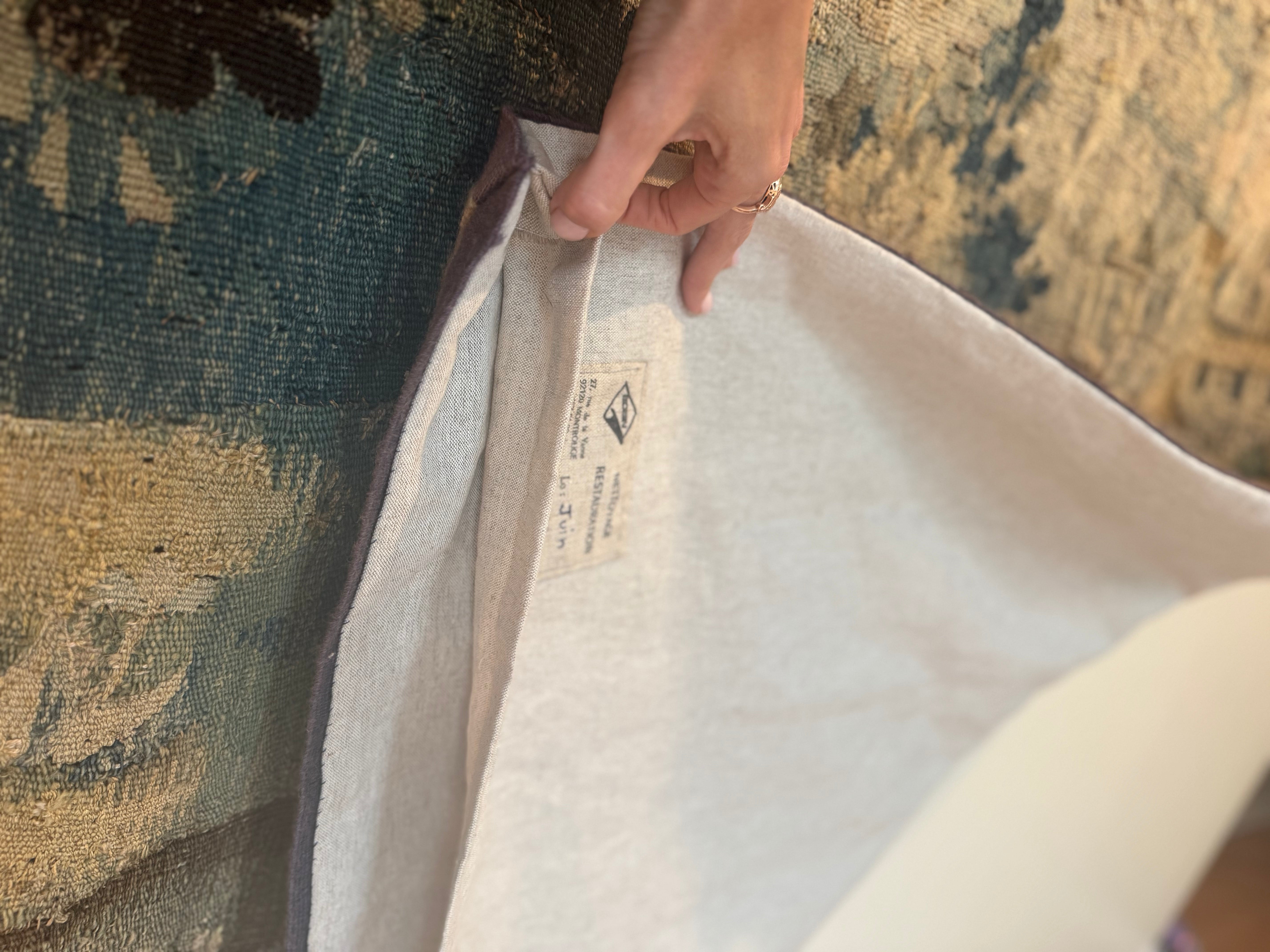
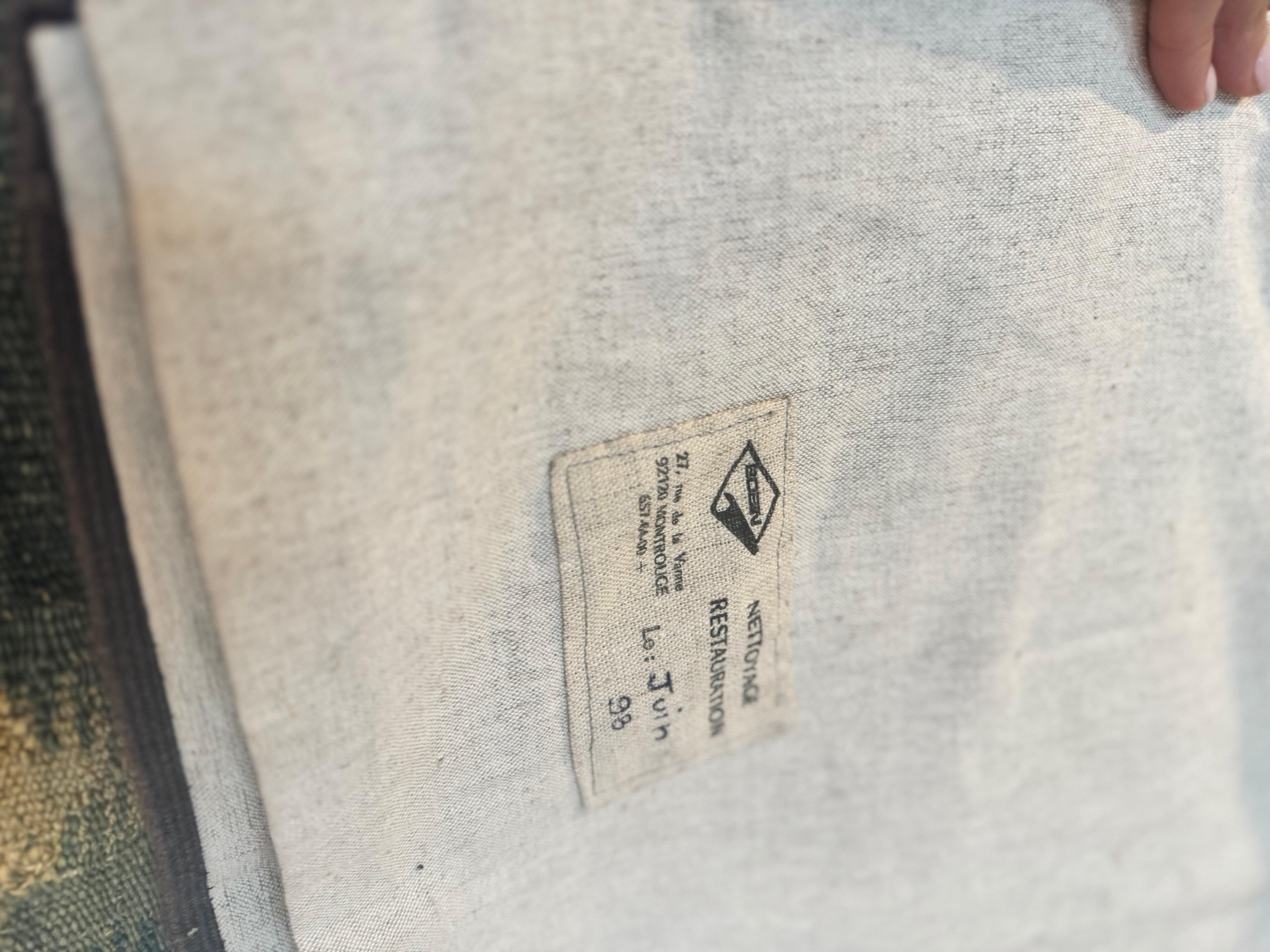
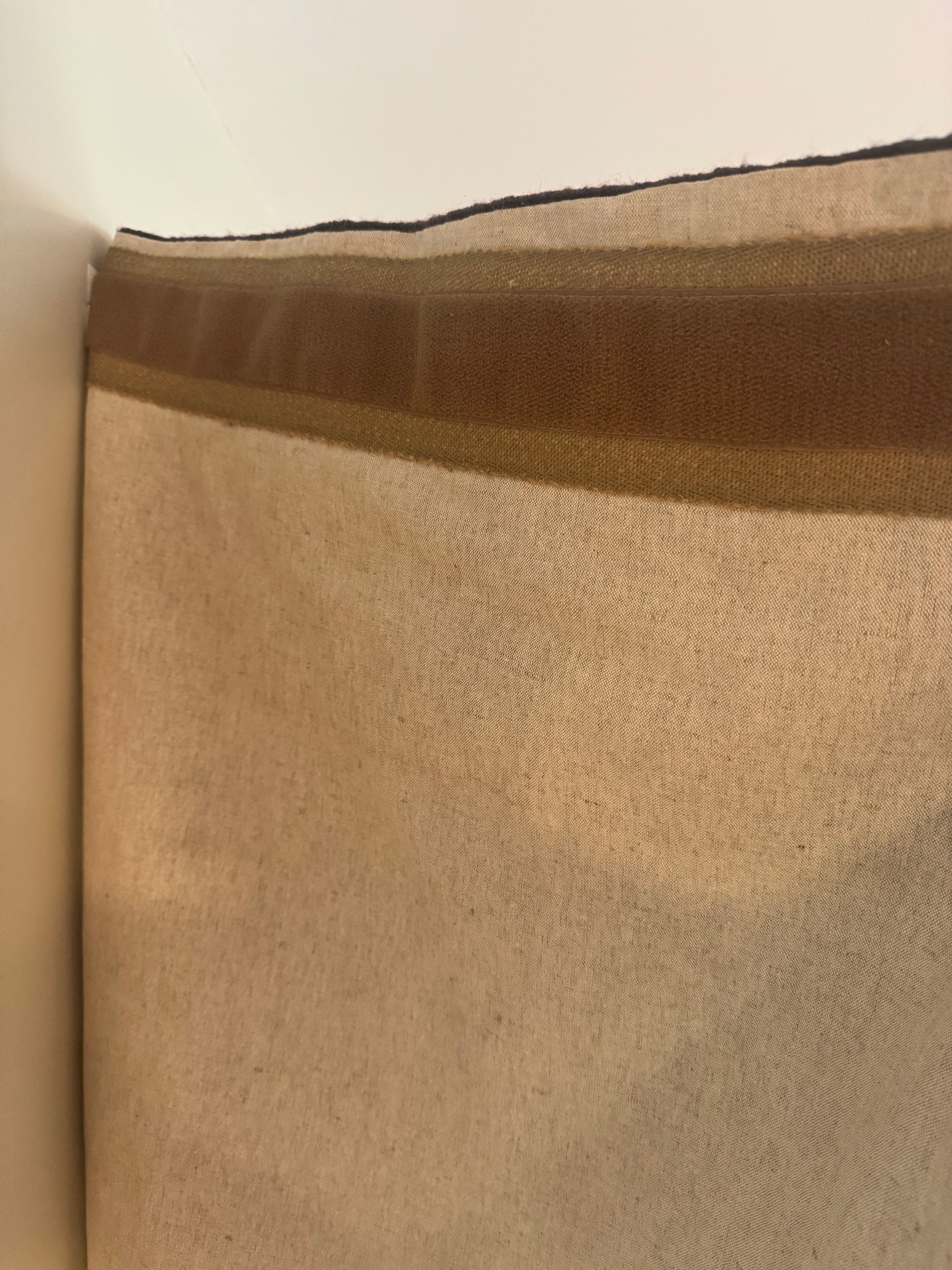
Large Antique French Verdure Tapestry
Professionally restored and backed; ready to hang
This richly woven verdure tapestry dates to the late 1600s or early 1700s and features a tranquil woodland scene with two elegant birds—possibly herons or cranes—nestled among dense foliage. In the background, a château emerges from the mist, adding architectural structure to the lush, painterly landscape. The palette of vegetal blues, ochres, and soft florals is typical of the period and dyed with natural pigments that have mellowed beautifully over time.
The tapestry is composed of wool and silk threads and was handwoven, likely in the Aubusson or Lille tradition, with visible irregularities in the weave that confirm its age and authenticity. Notable details include the expressive rendering of the birds and the layered leaves that give the scene a painterly sense of depth and movement.
In 1998, the piece underwent a professional museum-grade restoration in Montrouge, France. It was lined with a double-layer linen backing for conservation purposes and fitted with a Velcro-mounted hanging system—both added at the time of restoration to protect the textile and allow for secure, reversible display. A stitched atelier label remains on the reverse, dated “Juin 98,” indicating the exact month and year of treatment. The restoration appears to have been carried out by the renowned Bobin Tradition, a Paris-area atelier known for restoring works for the Louvre, Versailles, and French national museums.
Condition is very good for its age, with visible age-related wear, fading of trim, and minor thread thinning consistent with centuries of use. This tapestry is ready to hang and makes an extraordinary statement piece—visually compelling, historically significant, and preserved with care.
Styling Notes
This tapestry brings warmth, texture, and historical depth to any space. Its square format makes it especially well-suited for display above a sofa, bed, or entryway console, even alone on a wall. The natural tones of the wool and silk pair beautifully with antique wood, rustic stone, and neutral textiles, while the rich foliage pattern can also serve as a striking contrast in more modern interiors. Because it is professionally backed and stabilized, it hangs cleanly and securely without sagging or distortion.
Historical Context
Verdure tapestries emerged as a dominant decorative form in the late 17th century, especially in France and Flanders, where they were prized for their ability to insulate walls and create immersive, nature-filled environments indoors. These works shifted focus from mythological and historical narratives to the natural world, often featuring forests, birds, and distant architectural elements. This tapestry’s composition, with its lush plant life and subtle château in the background, is characteristic of this period. The use of natural dyes and a handwoven wool and silk blend further place it within the late 17th- to early 18th-century tradition of Aubusson- and Lille-style tapestry production.
Choose options











